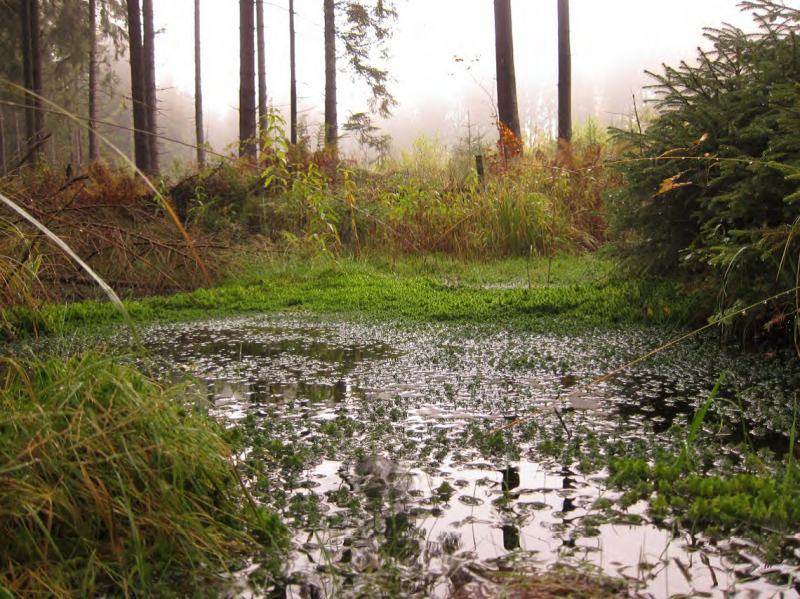Retention Ponds
Retention ponds are ponds or pools designed with additional storage capacity to attenuate surface runoff during rainfall events. They consist of a permanent pond area with landscaped banks and surroundings to provide additional storage capacity during rainfall events. They are created by using an existing natural depression, by excavating a new depression, or by constructing embankments. Existing natural...
| Benefits | Level |
|---|---|
|
ES1 - Water storage
|
Medium
|
|
ES3 - Natural biomass production
|
Medium
|
|
ES4 - Biodiversity preservation
|
High
|
|
ES5 - Climate change adaptation and mitigation
|
Medium
|
|
ES7 - Flood risk reduction
|
High
|
|
ES8 - Erosion/sediment control
|
Medium
|
|
ES9 - Filtration of pollutants
|
High
|
|
ES10 - Recreational opportunities
|
Medium
|
|
ES11 - Aesthetic/cultural value
|
High
|
|
PO2 - Improving status of physico-chemical quality elements
|
Low
|
|
PO4 - Improving chemical status and priority substances
|
Low
|
|
PO7 - Prevent surface water status deterioration
|
Medium
|
|
PO9 - Take adequate and co-ordinated measures to reduce flood risks
|
High
|
|
PO11 - Better protection for ecosystems and more use of Green Infrastructure
|
High
|
|
PO12 - More sustainable agriculture and forestry
|
Low
|
|
PO14 - Prevention of biodiversity loss
|
High
|
|
BP1 - Store runoff
|
High
|
|
BP2 - Slow runoff
|
High
|
|
BP5 - Increase evapotranspiration
|
Medium
|
|
BP8 - Reduce pollutant sources
|
Low
|
|
BP9 - Intercept pollution pathways
|
High
|
|
BP10 - Reduce erosion and/or sediment delivery
|
High
|
|
BP12 - Create aquatic habitat
|
High
|
|
BP13 - Create riparian habitat
|
Medium
|
|
BP14 - Create terrestrial habitats
|
Low
|
|
BP15 - Enhance precipitation
|
Low
|
|
BP16 - Reduce peak temperature
|
Low
|













